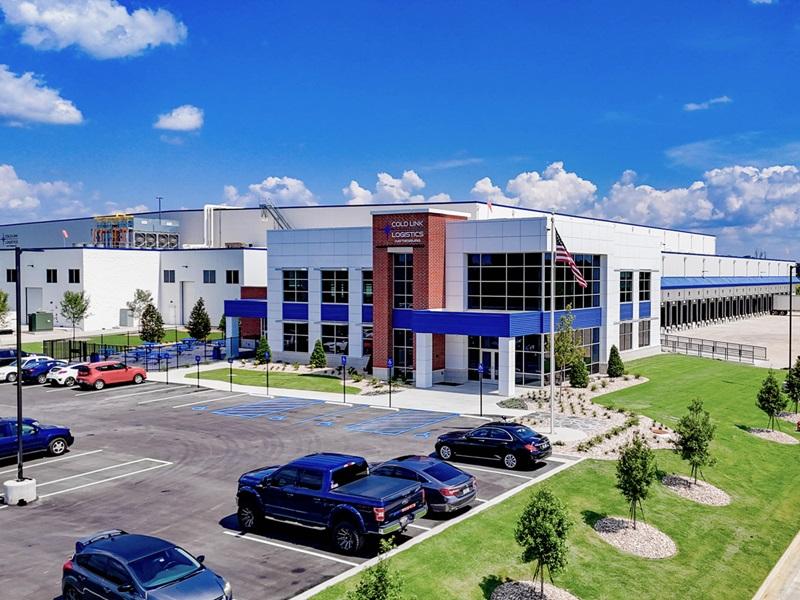
EXCLUSIVE: With a new name, new leadership, G2S2 Capital's acquisition of almost $600 million of its debt, and the office market showing signs of recovery, Ravelin Properties REIT (RPR-UN-T) CEO Shant Poladian is optimistic about the future.
Ravelin released its financial and operational results for the year ended Dec. 31, 2024 on March 27. Poladian told RENX in an exclusive interview these should be viewed as “a historical record” of the former Slate Office REIT — before the termination of Slate Management ULC’s external management agreement and the newly named Ravelin becoming internally managed at the end of the year.
Ravelin owned and operated 46 properties — mainly office and commercial buildings in Canada, Ireland and Chicago, Ill. — as of Dec. 31. They comprised approximately 6.6 million square feet of leasable space.
The REIT concluded the fourth quarter with: a net loss of $101.84 million; total assets worth $1.23 billion; total debt of $1.09 billion; a loan-to-value ratio of 89.4 per cent; and portfolio occupancy of 76.8 per cent.
Those results reflect challenges faced due to the COVID-19 pandemic, its lingering impact on office occupancy, and higher borrowing costs.
“That was basically a perfect storm that negatively impacted all players in office, and this one was particularly vulnerable to it given its very high debt levels,” Poladian said.
G2S2 providing financial sponsorship
The REIT had been negotiating with its major secured lenders for almost a year before Halifax-based G2S2 stepped in late last month to acquire almost $600 million of Ravelin’s debt, which Poladian called a significant step in progressing the trust's recapitalization plan. G2S2 was founded by George Armoyan, who was named chair of the REIT last November.
“George has been very, very supportive of what we're doing at the REIT level, and he wants our attention to be focused on maximizing the cyclical recovery and operating the business as opposed to spending a lot of time running around trying to raise money and restructure the financing,” Poladian explained.
“If you have very onerous terms around a recapitalization where the REIT is basically subject to three years of very intensive oversight and compliance requirements with the banks, it just would not have resulted in an optimized scenario for all of our stakeholders. It would have been more geared towards a recovery for the first lien lenders as opposed to everybody.”
Poladian said there’s one bank left to negotiate with, and there’s still work to be done, but Ravelin is in a better place now.
Internal management will make a difference
Moving the termination of Slate Management ULC’s external management agreement to Dec. 31 from March 31 made for a clean year-end cut-off and made it easier to retain key employees whom Poladian said have provided “continuity and competency” and are collaborating well with new people that have been brought in.
“My guess is that very few, if any, would have still been around to service the REIT if we had to wait until the end of March,” Poladian said. “We're really happy with the way it's played out and clearly our financial sponsor is very happy as well, given that they've made a substantial capital investment to turn the REIT around with the purchase of the debt.”
Institutional investors want to buy into a business where the executive officers are fiduciaries to shareholders and not to an outside manager, according to Poladian.
Ravelin anticipates the management internalization will save at least $10 million this year due to the elimination of management fees and greater focus on overhead expense management. Poladian said it will also enable the trust to be better equipped to operate at its full potential.
“We're spending a lot of time focusing on leasing right now, and dealing with tenant relations and clearing up deferred cap ex and those sorts of issues.”
Chicago portfolio key focus
Demand fundamentals have been recovering since mid-2024 and more people are back in their offices, but there’s bifurcation between building owners willing to spend money to fill vacancies and those that are capital-constrained and using options such as providing free rent as a short-term solution.
Poladian said Ravelin’s portfolio performance was stable in Canada and did well in Ireland last year, but it took a big hit in Chicago.
“Chicago is one of those markets where it's quite dynamic and tenants require capital to renew and to bring in new tenants,” he elaborated. “The REIT was doing free rent deals and effectively had an implosion in occupancy.
“So we've been aggressively focused over the last few months on zeroing in on our Chicago operations and turning them around because that is the single biggest challenge that we have across the whole portfolio. So as we turn that and fill the buildings up, it will buoy the entire company.”
Leasing vacant space is a priority

Ravelin’s leasing pipeline exceeds 650,000 square feet, or approximately 10 per cent of its total portfolio, of renewals and new leases.
Tenant demand for space has meaningfully improved and active lease negotiations are either underway or completed across all markets. That includes spaces vacant for prolonged periods of time.
“We're pretty excited and energized and look forward to delivering, as each quarter goes by, and earning our way back into being a public company that is an investment of choice by our investors and also a landlord of choice by our tenants,” said Poladian, who is involved with every lease signing.
Keeping tenants happy will make them want to renew leases and be willing to pay higher rents, Poladian stressed.
“They have already started to see the difference in dealing with us as a team as opposed to a fund structure.”
More resources, desire to diversify
Poladian said Ravelin now has the resources to make its properties more attractive to tenants.
“We have our internal resources and our financial sponsor has a clear intention to support the recovery of the business, which requires people, capital and time. We've put the people in. We are in the process of bringing in additional capital, and that's easier now with our financial sponsor owning the majority of our first lien debt.
“And for time we've got a forbearance agreement where we'll have an opportunity to share as much information with the public as we possibly can to outline what our plans will be over the full recovery and stabilization over a few years.”
While Poladian is bullish on the office sector, he wants Ravelin to be a more diversified REIT.
“The REIT does have a number of assets that are non-office, and we'll continue to reposition the company to be much more dynamic going forward rather than just focused on a single silo to suit a fund strategy. Typically, when you run a fund, you're going to be focused on a single asset class and a single strategy.”
Ravelin owns a 10-year-old, 64,218-square-foot data centre in Winnipeg and Poladian believes other properties in the portfolio have potential to be converted to data centres or other uses.
“There are significant growth opportunities that are embedded within our own properties, where we already own the land and we have access to significant high-powered transmission lines and fibre that can connect to our sites,” Poladian said.
“We've got a number of properties that have excess surface parking lots.”
Dispositions vs. acquisitions
Ravelin completed $114.1 million in dispositions last year, including three during Q4.
The trust just closed on the $16.5-million sale of a 24-year-old, 103,179-square-foot office property on a 10.82-acre site at 1189 Colonel Sam Dr. in Oshawa, Ont. It was under contract before Poladian became CEO and was the last property the trust formally had on the market.
“Other than benefitting the lenders in terms of paying down debt, there was virtually no benefit to the REIT for having sold any of it,” Poladian said. “In hindsight, it would have been better off to not have any dispositions at all.
“However, the past is the past and, going forward, we would only do dispositions if it made strategic and financial sense for the REIT.”
Poladian said Ravelin has completed its “triage situation” and determined the path to moving forward with the recapitalization plan. That could potentially involve acquiring assets.
“It wouldn't make sense to put in an operating team and go through the whole internalization process and remain public unless the expectation was to grow, not just for growth sake but to actually create value and improve the risk profile of the business and leverage off of the core competencies that we have.
“If the right opportunities came along for acquisitions, we wouldn't turn them away today. We would definitely look at them.
“But obviously our hurdle rate to do them would be a lot higher than if the coast was clear and the skies were blue. They would have to be very, very strategic for us to do any kind of investment transactions at this point.”
G2S2 has real estate holdings outside of Ravelin and could provide a potential pipeline of acquisition opportunities if the right synergies exist, so the REIT’s transactions aren’t necessarily limited to third parties.










